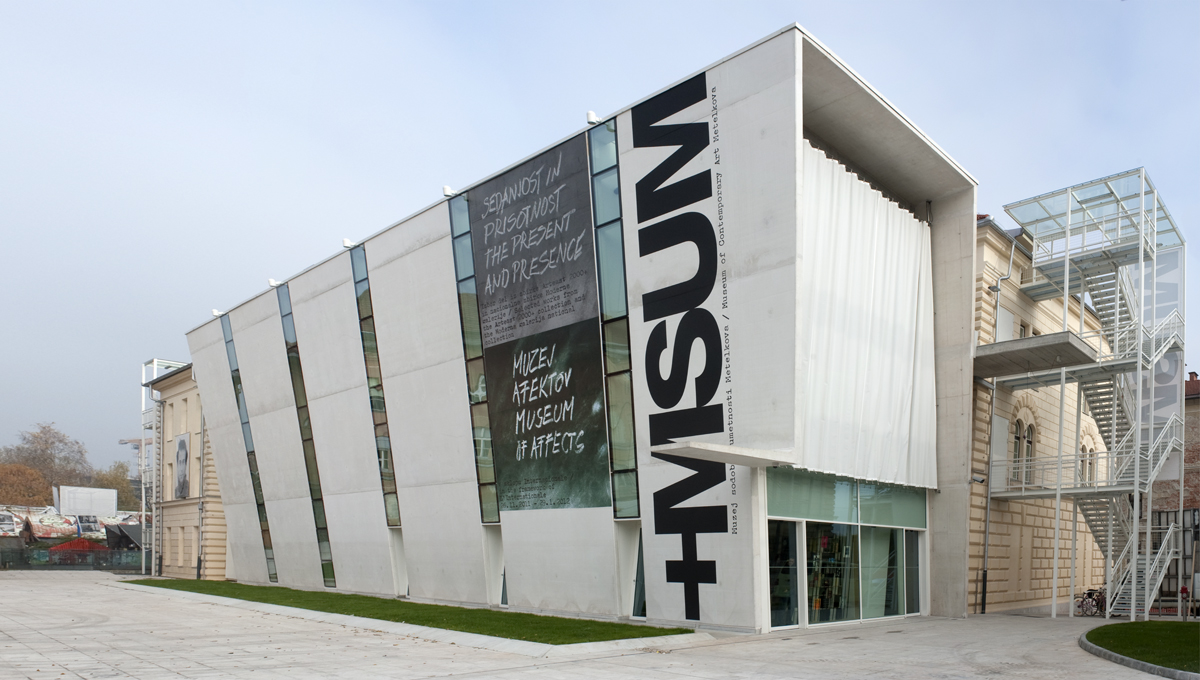Twenty years ago Tadej Pogačar established a special parinstitution, the P.A.R.A.S.I.T.E. Museum of Contemporary Art, to serve as a framework for his various activities. Since then the P.A.R.A.S.I.T.E. Museum has inhabited the bodies of other museums and similar institutions, organizing the materials found there in a way that draws attention to crucial though frequently overlooked principles guiding the way these institutions operate in building our knowledge of both the present and the tradition. The concept of this installation of selected material found in the basement corridors of the +MSUM is self-referential and analytical, raising the question of how do we work? The spatial organization of objects and the scheme of interconnections/networking constitute an attempt to visualize the established relations, connections, and translations. A look back into the past and forward into the future comes to rest on what conceptually underpins the working of the P.A.R.A.S.I.T.E. Museum.
Among the crucial concepts there is the Annales School, a style of historiography based on transcending individual discipline, flexibility and methodological eclecticism. It left its mark on Situationist theory, a revolutionary avant-garde plan to transform life through constructed situations and attacks on the basic principles of capitalist society, marketability and the function of spectacle.
Another crucial concept is Michel Serres’s concept of the parasite, focusing on the so-called third space personified as the parasite. A “third man” is essential for communication as the point of exchange, a mediator, a channel. While enabling communication, the parasite also disrupts messages, producing noise and jamming them. In order to understand how a system works, its non-function too must be studied and understood. Serres influenced the poststructuralist Actor-network Theory (ANT), which sees objects as part of social networks, both material and semiotic.
Artistic practice is not, however, perceived as a concept or an object, but as a whole, as a totality of elements that only make sense in relation to one another. A structural deconstruction of components allows indeterminateness and the displacement of the role, use, and significance of a work.
Another influential component of this special atmosphere is reism, a theory-based system around the leading role of the world of things, defining not only a specific aesthetics and certain artistic procedures, but also a wider general attitude to the world and everyday life.
Tadej Pogačar (b. 1960 in Ljubljana) is a visual and intermedia artist. After studying ethnology and art history at the University of Ljubljana he went on to study at the Academy of Fine Art in Ljubljana, where he completed his postgraduate studies. He is the founder and director of the P.A.R.A.S.I.T.E. Museum of Contemporary Art. He has participated in numerous international exhibitions of contemporary art, including the 10th Istanbul Biennale, the 49th Sao Paulo Biennale, the 3rd Tirana Biennale, ZKM Karlsruhe, the 49th Venice Biennale, and in shows at the San Francisco Art Institute, the Stedelijkmuseum in Amsterdam, the Arte Carillo Gil in Mexico City, the Moderna Museet in Stockholm, and the Gagosian Gallery in New York. He has received numerous awards and grants for his work: the Franklin Furnace grant, New York (2001); the Trend Award for outstanding achievement in visual art, Ljubljana (2008); the Jakopič Award – Slovenian’s highest fine arts award, Ljubljana (2009); and the György Kepes fellowship at the Program in Art, Culture and Technology at the MIT, Boston (2012-2013).


